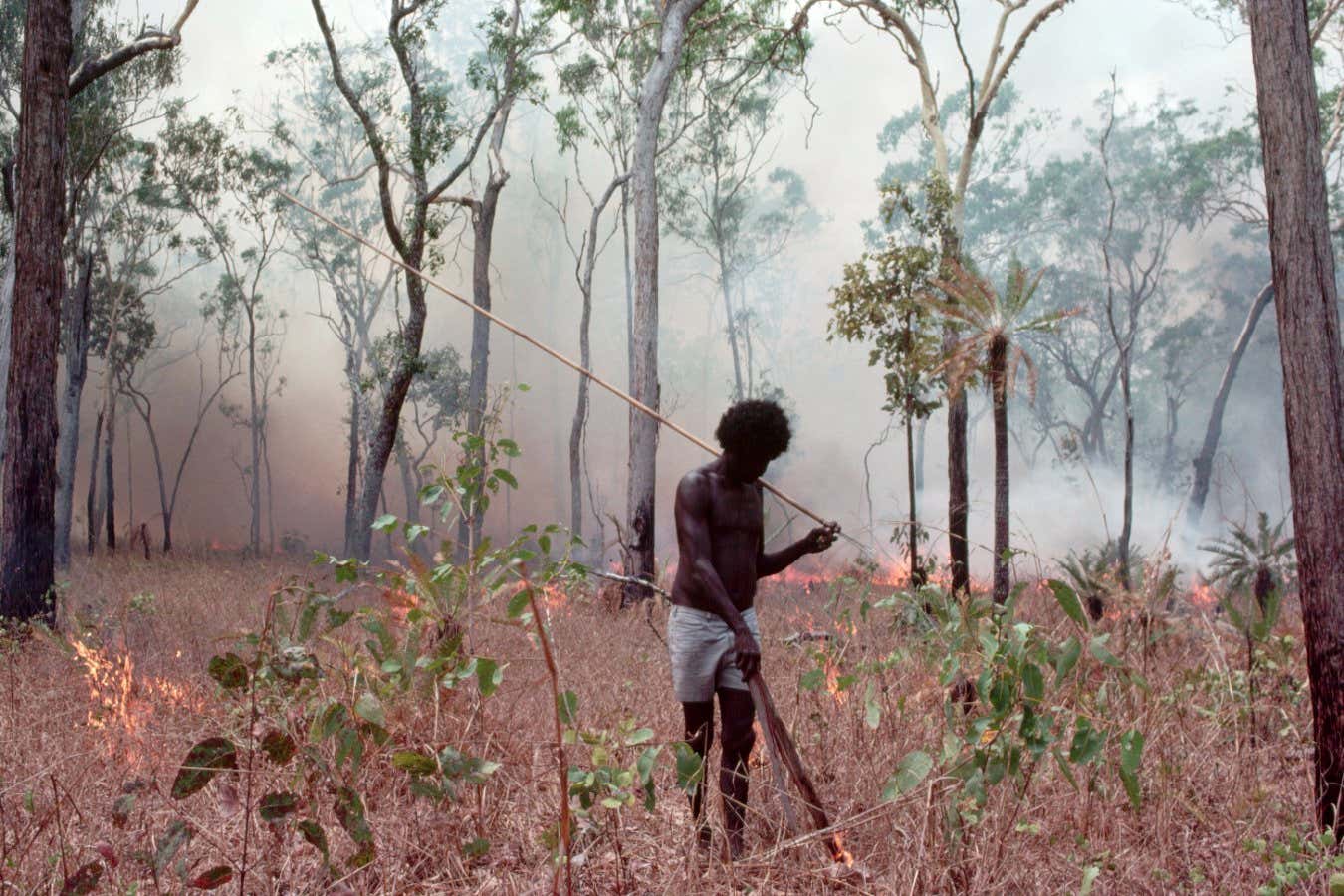Lake sediments reveal the ancient history of Aboriginal people’s use of fire to manage the landscape, a tradition that has benefits for biodiversity
By James Woodford
11 March 2024
Aboriginal people use fires to manage the landscape
Penny Tweedie/Getty Images
Indigenous Australians have been managing the environment with fire for at least 11,000 years, according to an analysis of sediment cores retrieved from an ancient lake.
Michael Bird at James Cook University in Cairns, Australia, says the findings suggest that a return to an Indigenous regime of more frequent but less intense fires could reduce the risk of catastrophic bushfires and improve environmental management.
Read more
The civilisation myth: How new discoveries are rewriting human history
Advertisement
It has long been known that Australia’s first peoples, who are thought to have been on the continent for 65,000 years, carefully managed the landscape with fire to make it easier to move around and hunt prey. They also figured out that this benefited some animals and plants that they preferred and reduced the risk of more dangerous fires.
However, it has been difficult to establish how long this has been happening for, says Bird. That is because most waterways completely dry out in the dry season each year and the carbon in their sediments is destroyed.
Girraween Lagoon, near Darwin in the Northern Territory, is a massive sinkhole covering an area of about 1 hectare that has stayed permanently wet for at least 150,000 years. As the climate changed over millennia, so, too, did the vegetation around the sinkhole. “From Girraween Lagoon, we have got 150,000 years’ worth of sediment that has never dried out,” says Bird.
